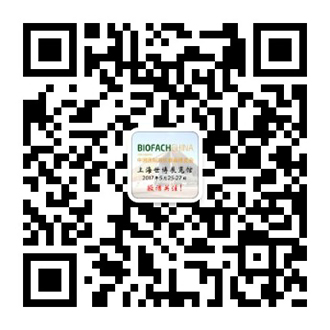News of Organic Industry
Organic foods now account for 7.6% of total food sales in Denmark.
Paul Holmbeck, CEO of the association for organic food farmers Økologisk Landsforening, says that Denmark's position is a result of the knowledge, interest and trust Danish customers have in organic food production. Supermarkets are also successful in marketing organic foods.
Helene Birk, export manager at Økologisk Landsforening, points out that the traditions and the reputation of Denmark as an organic nation is advantageous for exports. In fact, Danish organic food exports increased to DKK 1.2bn (EUR 160m) in 2012, more than quadrupling export levels over the past seven years.
The Danish organic bakery company Aurion has also posted its best result in 39 years. In 2013, its sales turnover increased by 25% to DKK 36.6mn (EUR 4.9m) and pre-tax profit amounted to DKK 1.5m (EUR 0.2m). The company's sales to retailers, catering and wholesale sector all increased.
(Source: Organic Monitor)
U.S. Organic Cotton Survey reveals potential opportunities for future growth
Washington, D.C. (Feb. 20, 2014)—Looking at the status of U.S. organic cotton production, the 2012 and Preliminary 2013 U.S. Organic Cotton Production & Marketing Trends report prepared by the Organic Trade Association (OTA) identifies three building blocks for the long-term success and viability of domestic organic cotton production.
The first—the commercial availability of organic seed— is currently a major hurdle for organic cotton producers. However, promising research is now being conducted by a team at Texas A&M AgriLife Research in Lubbock, TX. The research, led by Dr. Jane Dever, an associate professor in cotton breeding, focuses on improving organic and non-GM cottonseed, including fiber quality and yields, as well as increased tolerance to drought, pests and weeds.
The second—increased use of the Global Organic Textile Standard (GOTS) stringent voluntary global standards for the post-harvest processing of apparel and home textiles made with organic fiber—has resulted in more than 3,000 facilities worldwide certified to GOTS. In the United States, the number of GOTS-certified facilities has increased to 44, an indication that consumers are seeking organic textiles from field to purchase that are made with the environment and health in mind.
The third building block—marketing efforts to increase consumer demand for U.S.-grown organic cotton—will be key to gaining more consumer purchases to grow domestic production. Consumers already seek the “Made in the USA” label for many items. As organic textiles are both grown and manufactured in the United States, a unique and powerful story can be told about sustainability as well as job creation.
Top line figures from the survey showed that while acres planted to organic cotton actually decreased by eight percent, from 16,050 acres in 2011 to 14,787 in 2012, acres harvested increased to 9,842 in 2012—a 60 percent gain over 2011, when only 38 percent of the total planted acres were able to be harvested. As a result, 8,867 bales were produced in 2012, representing an increase of approximately 22 percent over the prior year.
The majority of the U.S. organic cotton crop in 2012 was planted to upland cotton, with pima cotton representing less than 1,000 planted acres.
In addition, survey respondents reported an increase in acres planted in 2013—from 14,787 acres in 2012 to 15,685 acres. Production was expected to hold steady, primarily due to weather-related issues. Meanwhile, survey findings project a five-year increase in planted acres to 18,614, marking the largest acreage devoted to organic cotton in the United States since 1995.
(Source: Organic trade association)
Tags:









